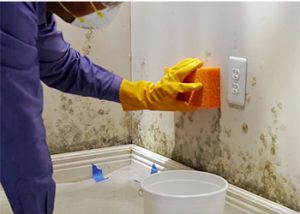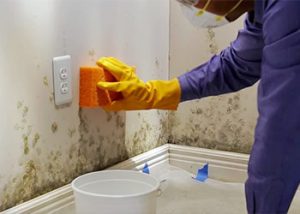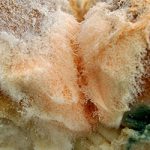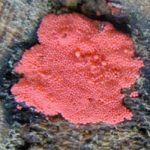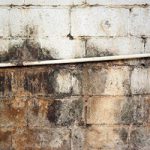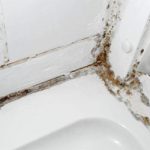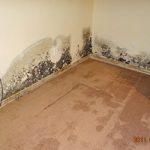Drywall has always been an easy, popular choice for a wall covering. Now you can buy drywall that will resist mold and mildew, or create a soundproof room with it. What do all of the colors mean, and where do you need the different new types?
Drywall was introduced early in the twentieth century, but its popularity boomed in the post-war years when speedy housing construction was a high priority. It was like the invention of sliced bread, to builders. Drywall is the generic term for other names of the same product. It is also called a gypsum board or wallboard.
Sheetrock was the original brand name for drywall, but now many companies make drywall. Since drywall’s introduction, it has morphed into several different types. Yes, you will have to make a choice, even with to prevent mold from drywall.
- White – “Regular” drywall is white on one side and brown on the other. Regular drywall provides one of the cheapest, easiest ways to cover your walls. It ranges from 3/8″to1″ thick and comes in many different sizes for various applications.
- Blueboard – This is also called plaster baseboard. The blue covering is made to work with a veneer plaster coating that has high water and mold resistance. However, it is not made for mud, tape and paint.
- Greenboard- Also referred to as MR (moisture resistant) board, oil in the paper makes this drywall more resistant to humidity than regular drywall. It is slightly more expensive than regular drywall, but cheaper than the blue board/veneer plaster option if you are hiring contractors.
Greenboard is not waterproof, so don’t use it for shower or tub walls. It is a good choice in certain areas of the house but check your local zoning laws first. - Paperless– Georgia Pacific introduced DensArmor Plus Paperless drywall in February 2007. This gypsum board product is covered with a fiberglass mat; no paper is used. The theory is that mold will not have anything to feed on sandpaper. However, this is still a fairly new product and probably shouldn’t be used where you know it will be exposed to direct moisture, such as shower wall. The quality of the board is a little tougher than regular drywall. Some people find it easier to cut.
If you install paperless drywall, take precautions for working with fiberglass: wear clothing that covers your arms and legs, gloves, goggles, a hat, and a dust mask. When you finish the job, rinse off in a cool shower. Warms water opens your pores and allows tiny fiberglass fragments to enter, which can produce an itchy rash.
Also be aware that paperless drywall is slightly textured, and requires a skim coat of joint compound to achieve the same smooth look you expect from drywall.
Type X – in some areas, code will require you to install a fire-resistant drywall product, generally termed type X. Type X is made with special non-combustible fibers. There are several fire-resistant drywall products on the market.
Purple – National Gypsum’s line of drywall includes the XP Hi-Abuse and XP Hi-Impact. These products combine fire resistance with greater durability and mold resistance. What’s the difference? According to the website ( nationalgypsum.com):
Both offer: Type X ranting, a tapered edge for easier mudding, mold and mildew resistance, a high-density gypsum core, and 100% recycled paper wrapping.
Hi-Impact Adds – Moisture resistance and fiberglass mesh embedded in the core.
These products were formulated for institutional settings such as daycares and schools. You can use them in a residential setting where you need a type X ranting plus durability. Picture any high-humidity area in your home where you might wrestle with the kids – like a rec room in your basement.
Soundproof – Music studios need soundproof rooms for recordings, but you might like the idea of a quiet room in your own home. The QuietRock brand name by Quiet Solution claims you would need & sheets of regular drywall to achieve the same sound barrier as with one of its panels. Soundproof panels vary in STC (sound transmission class) ratings and price. You may not need a studio-quiet room, but you might like a quiet home theater or nursery. Either way, expect to pay quite a bit more for peace.
So what kind of drywall do you really need to use? The answer depends greatly on your family’s needs, and how much humidity your home will experience. Most likely you will choose a mixture of drywall types where you need them most. Keep in mind that although drywall products is much improved, no gypsum board product is mold-proof. Good housing construction is your first line of defense against the elements, that otherwise will cause damage to your wallboard and home.

